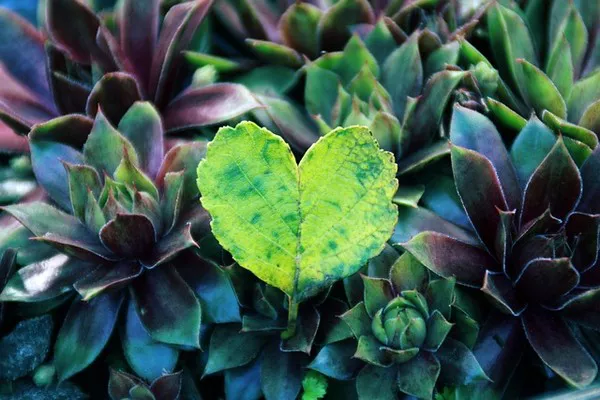Succulents have surged in popularity over the past few years, adorning homes, offices, and gardens with their unique and captivating appearance. These hardy plants are known for their ability to store water in their fleshy leaves and stems, making them low-maintenance choices for plant enthusiasts. However, understanding how much water a succulent needs is essential to ensure their health and longevity.
In this article, we will explore the factors that influence a succulent’s water requirements, signs of overwatering and underwatering, and provide practical guidelines to help you maintain these resilient plants successfully.
The Importance of Proper Watering
Succulents are renowned for their adaptability to arid conditions, but this doesn’t mean they thrive on neglect. Overwatering or underwatering can harm your succulent’s health, leading to root rot, pest infestations, and a generally unhappy plant. To promote lush growth and vibrant aesthetics, it’s crucial to strike the right balance in watering your succulents.
Factors Influencing Succulent Watering Needs
Succulent Species: Different succulent species have varying water requirements. Desert succulents like cacti, for instance, require less frequent watering compared to jungle succulents like aloe vera. Research the specific needs of the succulent species you own to tailor your care routine accordingly.
Environmental Conditions: Local climate and seasonality play a significant role in determining how often you should water your succulents. During hot, dry summers, you’ll likely need to water more frequently than during cooler, wetter months.
Pot and Soil: The type of pot and potting soil used can influence water retention. Succulents typically prefer well-draining soil and pots with drainage holes. These features help prevent waterlogged roots, a common issue with succulents.
Light Exposure: The amount of sunlight your succulent receives directly impacts its water needs. Succulents in bright, full sun locations will dry out more quickly and require more frequent watering than those in low-light conditions.
Plant Size and Age: Smaller, younger succulents have smaller root systems and, consequently, need less water than larger, mature plants.
Humidity: Regions with high humidity levels may require less frequent watering, as the air provides moisture to the plant.
Signs of Overwatering
Overwatering is one of the most common mistakes when caring for succulents. Recognizing the signs of overwatering is crucial to prevent damage to your plants. Here are some indicators to watch for:
Yellowing and Drooping: Succulent leaves should appear firm and plump. If they turn yellow or feel mushy to the touch, it’s a sign of overwatering.
Root Rot: Excessive moisture in the soil can lead to root rot, which often presents as a foul smell and black, mushy roots.
Fungus and Mold: Overwatered soil is a breeding ground for fungus and mold growth, which can be detrimental to your succulent’s health.
Leaf Drop: Overwatered succulents may shed leaves excessively as a response to stress.
Slow Growth: If your succulent appears to be growing more slowly than usual, it might be struggling with excess moisture.
Signs of Underwatering
Underwatering can also harm succulents, albeit in different ways. It’s essential to spot the signs early and take corrective action:
Shriveled or Wrinkled Leaves: Succulents will often show signs of dehydration through shriveled or wrinkled leaves.
Leaf Curling: Leaves curling inward can indicate a lack of moisture.
Slow Growth or Stunted Appearance: Insufficient water can lead to slow growth or a stunted appearance.
Dry, Cracked Soil: If the soil around your succulent is bone dry, it’s a clear sign that the plant needs water.
Watering Guidelines for Succulents
Now that we understand the factors influencing succulent watering needs and the signs of overwatering and underwatering, let’s delve into some practical guidelines to ensure your succulents thrive:
Use Well-Draining Soil: Pot your succulents in a well-draining soil mix. This ensures excess water doesn’t linger around the roots.
Choose the Right Pot: Opt for pots with drainage holes. These allow excess water to escape, preventing waterlogged roots.
Water Thoroughly but Infrequently: When you water your succulents, do so deeply to encourage healthy root development. Water the soil until water drains from the bottom of the pot, and then wait until the soil is completely dry before watering again. Frequency can vary depending on environmental conditions, but a general rule is to water every 2-4 weeks, adjusting as needed.
Water Based on Season: In the growing season (typically spring and summer), succulents may require more frequent watering. During the dormant season (fall and winter), reduce the frequency to prevent overwatering.
Water in the Morning: Water your succulents in the morning to allow any excess moisture to evaporate during the day. Avoid watering at night, as this can lead to prolonged soil moisture, increasing the risk of fungal issues.
Monitor Light Levels: Adjust your watering schedule based on the amount of sunlight your succulents receive. Succulents in brighter locations may need more frequent watering.
Conclusion
Successfully caring for succulents requires a delicate balance between providing adequate moisture and avoiding overwatering. By considering factors such as species, environmental conditions, pot and soil type, light exposure, plant size and age, and humidity, you can tailor your care routine to meet your succulent’s specific needs. Recognizing the signs of overwatering and underwatering is crucial for preventing plant damage.
Remember that the guidelines provided here serve as a starting point, and it’s essential to observe your succulents closely and adjust your care routine accordingly. With the right knowledge and attention, you can enjoy the beauty and resilience of these unique plants for years to come.


